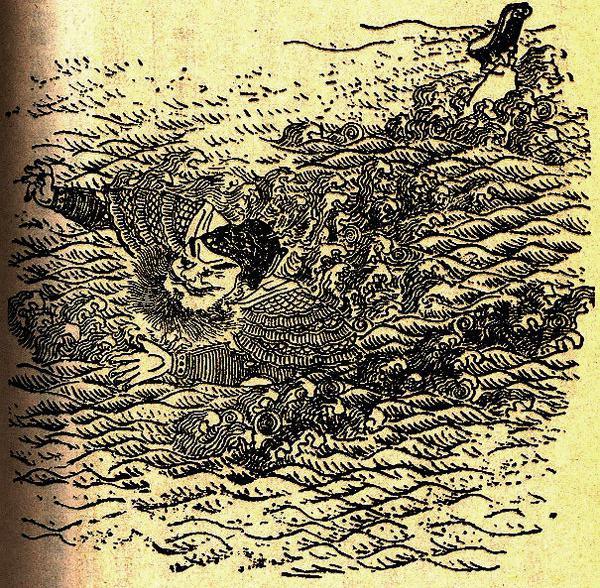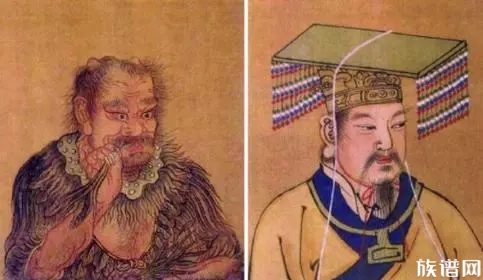



埃迪卡拉纪
名字来源
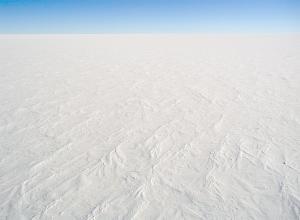
于南极拍摄的照片,可能就是埃迪卡拉纪时南极陆地上的样子
埃迪卡拉动物群因为发现于南澳大利亚的埃迪卡拉山而得名。1946年,一位澳洲地质学家(Reg Sprigg)在古代的沙岩板中留意到一曾在这里发现显生宙以前的化石。研究这些化石的科学家(Martin Glaessner)认为这是珊瑚、水母和蠕虫的先驱。以下几十年,南澳大利亚还找到很多的隐生宙化石,其他各大洲也找到一些。这些化石都叫作埃迪卡拉动物。一开始,人们认为埃迪卡拉动物是寒武纪的动物,但经过仔细的观察,埃迪卡拉化石比寒武纪还久远,应属于埃迪卡拉纪。
本纪曾被一些人称为 震旦纪 (Sinian) 。震旦纪的名称来源于中国,“震旦”是中国的古称。由于古印度人称中国为Cinisthana,在佛经中被译为震旦,故名震旦纪时至今日,中国学者仍经常这么称呼,中国教科书上一直称此纪为震旦纪。俄国人又把埃迪卡拉纪称为 文德纪 ,他们在这一时期的地层中又发现了一些古线虫动物的化石。
埃迪卡拉生物群
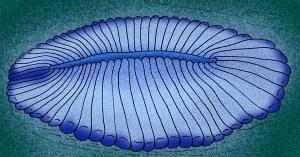
狄更逊水母为埃迪卡拉动物群中较著名的种类
埃迪卡拉生物群( 英语: Ediacaran biota )是1946年发现于澳大利亚南部埃迪卡拉( 英语: Ediacara )山地的末远古系庞德石英岩中的化石群,这类化石群已在世界30多个地点被发现。
特征
埃迪卡拉动物和今天的大多数动物不同,它们既没头、尾、四肢,又没嘴巴和消化器官,因此它们大概只能从水中摄取养份。大多的埃迪卡拉动物固着在海底,和植物十分相近,其他的则平躺在浅海处,等待营养顺水流而送上门来。埃迪卡拉动物化石出土越多,反而越没有规律。有几种化石比较像后来动物的先驱。
例子
加尼亚虫(学名: Charnia )、斯瓦特虫( Swartpuntia )、狄更逊水母( Dickinsonia )、古线虫( Paleolina )、皱节虫( Sabellidites )等
虽然在埃迪卡拉纪出现了很多的生物,但在埃迪卡拉纪末期,埃迪卡拉动物分成两支,它们有的成功演化成更有活力,更具进攻性的动物,有的则走向灭亡。而它们的特征也永远消失于历史舞台上。
末期灭绝事件
参见
埃迪卡拉生物群
参考资料
书目
A. Knoll, M. Walter, G. Narbonne, and N. Christie-Blick (2004) "The Ediacaran Period: A New Addition to the Geologic Time Scale." Submitted on Behalf of the Terminal Proterozoic Subcommission of the International Commission on Stratigraphy.
Knoll, A. H.; Walter, MR; Narbonne, G. M; Christie-Blick, N (2004). "A new period for the geologic time scale". Science 305 (5684): 621–622.
Knoll, A. H., Walter, M. R., Narbonne, G. M., and Christie-Blick, N. (2006). "The Ediacaran Period: A new addition to the geologic time scale". Lethaia 39 : 13–30.
"Geological time gets a new period: Geologists have added a new period to their official calendar of Earth"s history—the first in 120 years". London: BBC. 2004-05-17. Accessed 27 December 2010.
"South Australian Museum Newsletter April 2005" Accessed 9 August 2010.
B. M. Sokolov (1952). "On the age of the old sedimentary cover of the Russian Platform". Izvestiya Akademii Nauk SSSR, Seriya eologicheskaya 5 : 21–31.
Sokolov, B.S. (1997). "Essays on the Advent of the Vendian System." 153 pp. KMK Scientific Press, Moscow. (in Russian)
Sokolov B. S. (1965) "Abstracts of All-Union Symposium on Paleontology of the Precambrian and Early Cambrian." Nauka, Novosibirsk.
Rozanov, A.Y., Missarzhevskij, V.V., Volkova, N.A., Voronova, L.G., Krylov, I.N., Keller, B.M., Korolyuk, I.K., Lendzion, K., Michniak, R., Pykhova, N.G., and Sidorov, A.D. (1969). "The Tommotian Stage and the problem of the lower boundary of the Cambrian". Trudy Geologičeskogo Instituta AN SSSR 206 : 1–380.
M. A. Fedonkin, B. S. Sokolov, M. A. Semikhatov, N. M. Chumakov (2007). "Vendian versus Ediacaran: priorities, contents, prospectives". In: "The Rise and Fall of the Vendian (Ediacaran) Biota". Origin of the Modern Biosphere. Transactions of the International Conference on the IGCP Project 493n Moscow: GEOS . August 20–31, 2007.
Khomentovsky, V. V. (2008). "The Yudomian of Siberia, Vendian and Ediacaran systems of the International stratigraphic scale". Stratigraphy and Geological Correlation 16 (6): 581–598.
Comments By B. S. Sokolov, M. A. Semikhatov, And M. A. Fedonkin. (2004) Appendix 2 in: "The Ediacaran Period: A New Addition to the Geologic Time Scale." Submitted on Behalf of the Terminal Proterozoic Subcommission of the International Commission on Stratigraphy. pp. 32–34
Bristow, T. F. and Kennedy, M. J. (2008). "Carbon isotope excursions and the oxidant budget of the Ediacaran atmosphere and ocean". Geology 36 (11): 863–866. Retrieved 2007-05-05.
Le Guerroué, E., Allen, P. A., Cozzi, A. (2006). "Chemostratigraphic and sedimentological framework of the largest negative carbon isotopic excursion in Earth history: The Neoproterozoic Shuram Formation (Nafun Group, Oman)". Precambrian Research 146 (1–2): 68–92.
Le Guerroué, E.; Allen, P. A., Cozzi, A., Etienne, J. L. and Fanning, C. M. (2006). "50 Myr recovery from the largest negative δ13C excursion in the Ediacaran ocean". Terra Nova 18 (2): 147–153.
Le Guerroué, E.; Allen, P. A., Cozzi, A. (2006). "Parasequence development in the Ediacaran Shuram Formation (Nafun Group, Oman): primary origin stratigraphic test of negative carbon isotopic ratios". Basin Research 18 (2): 205–220.
A. Ragozina, D. Dorjnamjaa, A. Krayushkin, E. Serezhnikova (2008). "Treptichnus pedum and the Vendian-Cambrian boundary". 33 Intern. Geol. Congr. August 6–14, 2008, Oslo, Norway. Abstracts. Section HPF 07 Rise and fall of the Ediacaran (Vendian) biota. P. 183.
Hoffmann, K.H.; Condon, D.J.; Bowring, S.A.; Crowley, J.L. (2004-09-01). "U-Pb zircon date from the Neoproterozoic Ghaub Formation, Namibia: Constraints on Marinoan glaciation". Geology 32 (9): 817–820.
Condon, D., Zhu, M., Bowring, S., Wang, W., Yang, A., and Jin, Y. (1 April 2005). "U-Pb Ages from the Neoproterozoic Doushantuo Formation, China" (abstract). Science 308 (5718): 95–98.
Calver, C.R.; Black, Lance P.; Everard, John L.; Seymour, David B. (2004-10-01). "U-Pb zircon age constraints on late Neoproterozoic glaciation in Tasmania". Geology 32 (10): 893–896.
Ogg, J. G. (2004). "Status of Divisions of the International Geologic Time Scale". Lethaia 37 (2): 183–199.
Amthor, J. E.; Grotzinger, John P.; Schröder, Stefan; Bowring, Samuel A.; Ramezani, Jahandar; Martin, Mark W.; Matter, Albert (2003). "Extinction of Cloudina and Namacalathus at the Precambrian-Cambrian boundary in Oman". Geology 31 : pp 431–434.
"Earliest Animal Footprints Ever Found -- Discovered in Nevada" Newswise, Retrieved on October 5, 2008. Reporting on a poster session at the Geological Society of America
免责声明:以上内容版权归原作者所有,如有侵犯您的原创版权请告知,我们将尽快删除相关内容。感谢每一位辛勤著写的作者,感谢每一位的分享。

- 有价值
- 一般般
- 没价值








推荐阅读
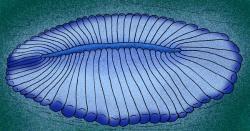

关于我们

APP下载






